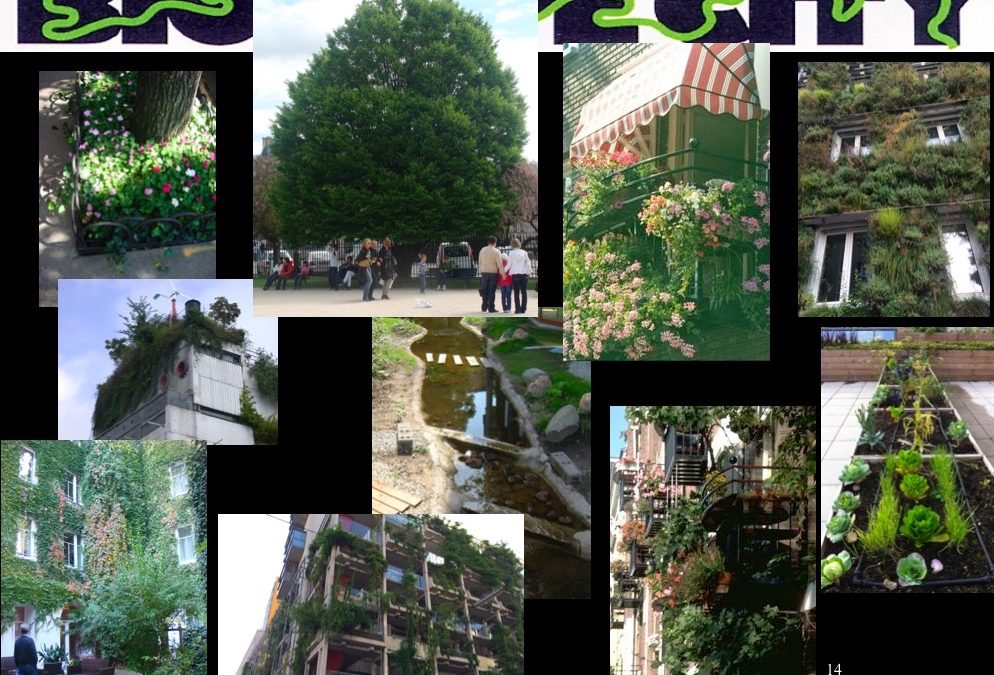The Austrian journaist Peter Reischer spoke with Prof. Helga Fassbinder from TU Eindhoven about the concept of Biotope City. He met in her Vienna flat in a building by Arch. Glück. To the opening question whether this was coincidence or luck, Helga Fassbinder replied: “Just luck!”
Prof. Fassbinder, how did your work with the Biotope City principle develop?
I had a serious traffic accident with whiplash in 1997. As a result, I could not tolerate any external stimuli for a long time. So I sat in my flat in the centre of Amsterdam and looked out of the window into the courtyard and waited for things to get better. That’s when I noticed what a rich nature there is. We urban planners and architects make the mistake of distinguishing between city and country, city and nature. In reality, the city is just as much a ‘type of nature’ as other forms of ‘nature’. From these observations I have learned that biodiversity is greater in the city than in the countryside. Biologists have since confirmed this.
But very few people know that!
Yes, unfortunately, and that’s why I developed the concept of the ‘Biotope City’. I organised a congress in Eindhoven called ‘Biotope City – the dense city as nature’. That was in 2002, 20 years ago. In the meantime I have given many lectures, also in Vienna, and someone told Harry Glück about it. He called me and asked if we could do a project together. Harry Glück looked for a plot of land and found the former Coca-Cola site. And this is where the ‘Biotope City Wienerberg’ now stands.
Can you explain the oxymoron of city as nature?
We are part of nature, ‘nature’ ranges from the desert to the jungle. Our cities are not exempt from this. That’s why there are birds in the city that were once rock dwellers. Let’s not think of nature as something to be kept outside, but as something to be integrated! We are also at the beginning of a new aesthetic of architecture. An aesthetic that integrates fauna and flora as ‘building blocks’ just like stone, wood and glass.
How do you see the cooperation with urban planners and architects?
Our built works must still stand and fulfil their functions in 100 years. That’s why I’m surprised that architects and urban planners in particular are so oblivious to the fundamentally changed framework conditions of our lives. The latest IPPC report (progress report of the Intergovernmental Panel on Climate Change of the United Nations) states that if all the pledges, agreements, etc. are implemented in the current laxity and slowness, a global warming of 3.2 degrees is imminent. So we have to adapt our cities and our buildings to the future conditions.
Do you think that normal people can imagine or understand what 3.2 degrees of global warming means?
It’s not so important that the last person understands – the politicians, the business leaders have to understand – just like the experts.
But do they? Aren’t they more attached to a growth and profit maximisation mindset?
That may be so, I have long assumed that the biggest barriers to change are in the mind.
I believe that humans cannot perceive a slowly approaching danger and therefore do not react.
There is a scientific study by Jarred Diamond, MIT, about 50 different cultures on our planet that have all perished. The reasons were always that people did not adapt to changing external circumstances – such as climate changes.
Prof. Blühdorn from WU Vienna says that we are all subject to a ‘silent social contract’ that lets us talk (cleverly) about the dangers of climate change, but at the same time stipulates that we do nothing and remain passive. We are only victims.
I disagree! Take the City Wienerberg biotopes – something has been done there, even if it is only the first steps.
Would you consider Vienna a kind of showcase city in terms of ‘green building’?
Certainly! The municipality of Vienna is doing far more than others in a European comparison. Paris and Vienna are the only cities where a lot is really happening.
When I look at the Biotope City Wienerberg, I notice: again only 10-11 storey residential buildings with monotonous facades and greenery in between. The materials are also not ecological or sustainable (reinforced concrete, polystyrene).
We have to build densely – and where else can you find so much green between the buildings and on the facades? The project was started 10 years ago. At that time, another form of building was not yet feasible in terms of costs. We are now in the process of planning a ‘Biotope City 2.0’ in Vienna, sustainable, recyclable, again dense and, if fire protection permits, even more intensively greened. And the residents are to be given an active role in this, from consumers to ‘prosumers’.

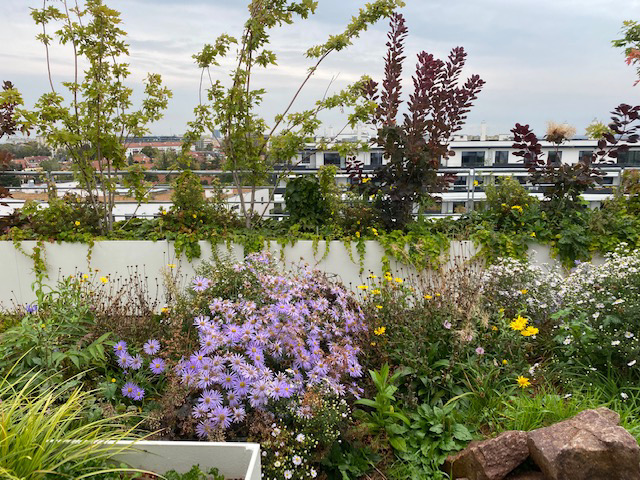
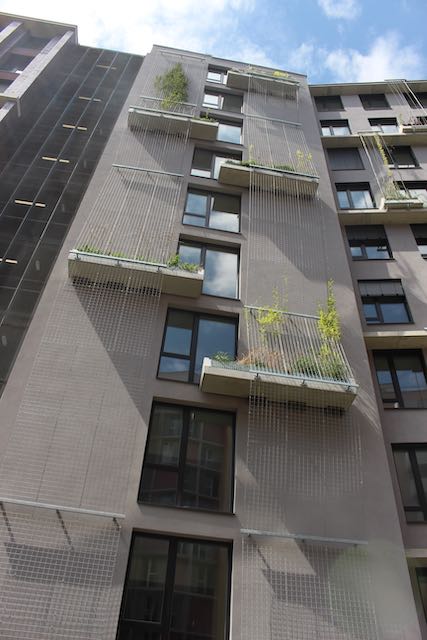
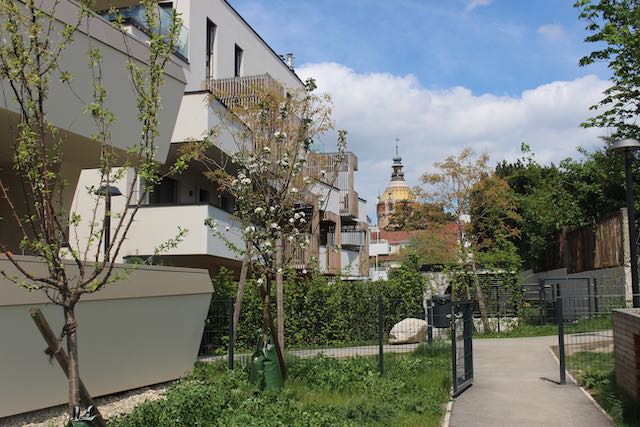
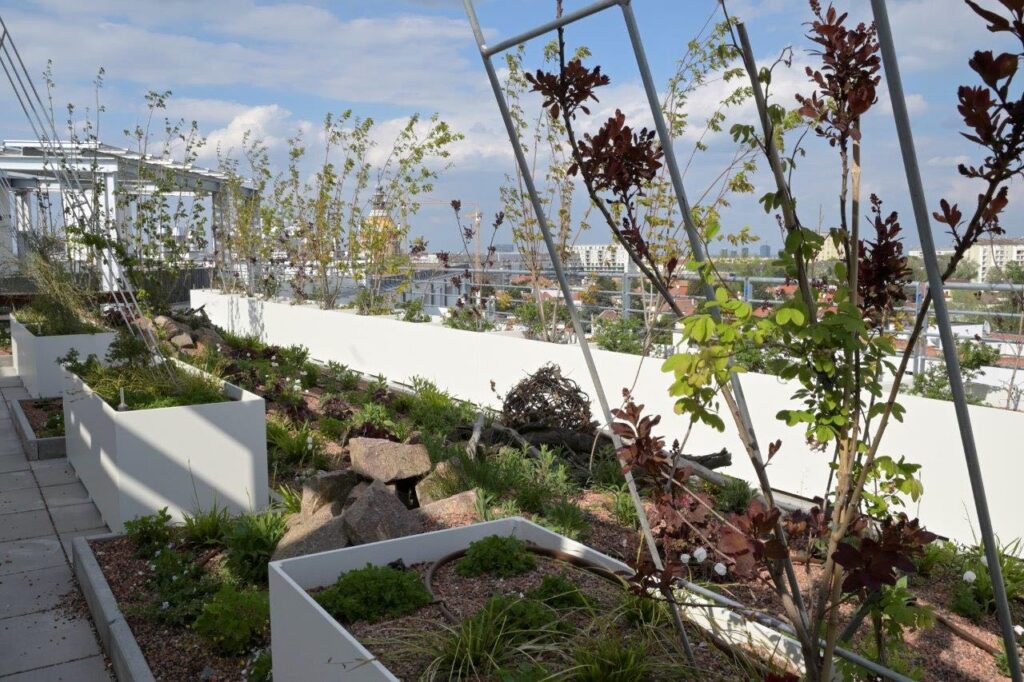
Isn’t the fundamental problem (also in building) a socially and system-related wrong way of thinking? We only think about growth and profit maximisation, about money.
If everyone in the world lived the way we do here in the western industrialised countries, the earth’s entire resources would be used up in no time. Add to that climate change and rising sea levels. The part of the earth that can be used agriculturally and inhabited by humans will shrink. At the same time, the world population continues to grow strongly. This will result in migration flows, also to us in Europe. We will have to learn to reduce our standards.
Do you see a contradiction between the urban planners’ call for densification and Biotope City?
Not at all, on the contrary. Whereas in the past we could afford to expand into nature, now nature will expand into the dense city. Admittedly, we are not yet technically advanced enough to be able to green all surfaces without any problems. In the meantime, green roofs are under control. What has not been solved is vertical greening with regard to fire protection, despite the excellent manual from MA 22. We have to build very densely, green and sustainably in the future.
My dream is that we build a Biotope City largely out of wood. I hope that we will come a bit closer to this goal with the next neighborhood based on the concept of Biotope City, the Biotop Wildquell at Vienna, in planning at the moment.

